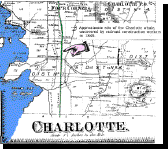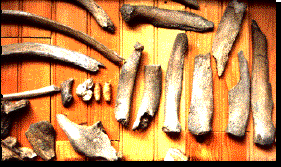 An introduction to our story...
An introduction to our story... An introduction to our story...
An introduction to our story... while constructing the first railroad between Rutland and Burlington, Vermont, workers unearthed the bones of a mysterious animal near the town of Charlotte. Buried nearly 10 feet below the surface in a thick blue clay, these bones were unlike those of an
y animal previously discovered in Vermont. After consulting with experts, the bones were identified as those of a "beluga" or "white" whale, an animal that inhabits arctic and subarctic marine waters in the northern hemisphere.
while constructing the first railroad between Rutland and Burlington, Vermont, workers unearthed the bones of a mysterious animal near the town of Charlotte. Buried nearly 10 feet below the surface in a thick blue clay, these bones were unlike those of an
y animal previously discovered in Vermont. After consulting with experts, the bones were identified as those of a "beluga" or "white" whale, an animal that inhabits arctic and subarctic marine waters in the northern hemisphere.

Because Charlotte is far inland (over 150 miles from the nearest ocean), early naturalists were at a loss to explain the bones of a marine whale buried beneath the fields of rural Vermont. Today, we can use the Charlotte whale to aid in the study of the geology and the history of the Champlain Basin.
